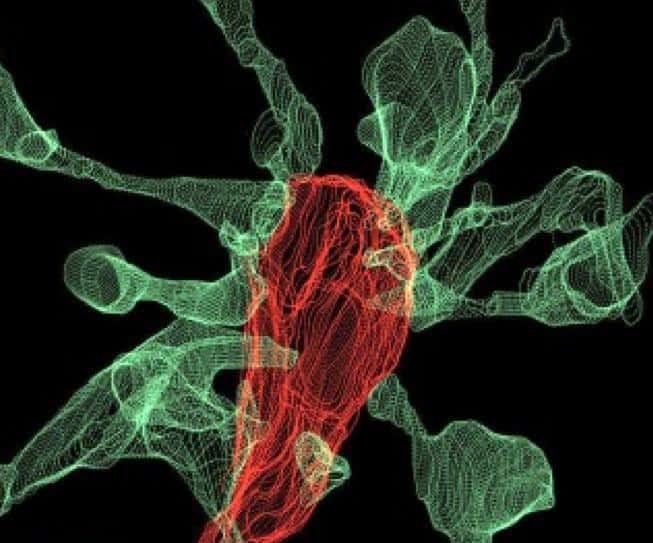Advanced techniques in cellular analysis are contributing to a better understanding of how brain immune cells, also known as microglia, contribute to healthy function and dysregulation in the brains of people with Alzheimer’s disease (AD). The findings were presented at Neuroscience 2021, the annual meeting of the Society for Neuroscience and the world’s largest source of emerging news about brain science and health.
Recent research suggests microglia play a key role in the development and progression of AD and other neurodegenerative disorders. A better understanding of microglial dysfunction may help explore signs and mechanisms of disease, clarify their interaction with genetic risk factors, and enable microglia as a potential therapeutic target.
Today’s new findings show:
- Cultured human microglia can model AD-associated microglial states, allowing identification of genetic regulators and potential new therapeutic approaches (Beth A. Stevens, Boston Children’s Hospital/Broad Institute).
- Dysfunctional microglia differentiate the brains of individuals with AD from the brains of healthy, older individuals (Ryan Shahidehpour, University of Kentucky).
- Distinct subpopulations of microglia are found near pathogenic features such as amyloid plaques and neurofibrillary tangles in brain tissue from individuals with AD, correlating with AD disease progress and clinical prognosis (Bahareh Ajami, Oregon Health and Science University).
“The technical advances presented today provide important insights into the role that immune cells play in the biology of Alzheimer’s disease,” said Li Gan, director of the Helen and Robert Appel Alzheimer’s Disease Research Institute at Weill Cornell Medical College, who studies the molecular mechanisms of AD and other dementias. “These findings contribute to the growing evidence that immune pathways contribute to the progression of many neurodegenerative diseases and offer new avenues for potential treatments.”
This research was supported by national funding agencies including the National Institutes of Health and private funding organizations. Find out more about microglia and the brain on BrainFacts.org.
The Multifaceted Role of Microglia in Alzheimer’s Disease Press Conference Summary
- New techniques are revealing more about the behaviors of microglia in healthy brains and their potential roles in neurodegeneration.
- A better understanding of microglial dysfunction in AD could identify novel therapeutic approaches for AD and other neurodegenerative disorders.
Modeling the Impact of AD Genetic Risk on Microglia States and Function
Beth A. Stevens, [email protected], Abstract P200.10
- Microglia express many genes associated with increased risk of developing AD, and recent work has identified distinct disease-associated states of microglia.
- Microglia derived from human stem cells and grown in a dish can develop the same disease states found in the brains of people with AD and are sensitive to specific AD-associated brain changes such as amyloid protein.
- The study identifies how AD risk genes affect microglial functions and disease-associated states, enabling exploration of potential new therapeutic approaches for AD that target neuroimmune interactions.
The Influence of Age on Microglia Degeneration in the Human Brain
Ryan Shahidehpour, [email protected], Abstract P244.06
- In healthy individuals, the number of dysfunctional, or dystrophic, microglia in a brain region associated with learning and memory stayed relatively constant with increasing age.
- In people with neurodegenerative disease, such as AD, the same brain region showed an increase in dysfunctional microglia.
- The findings suggest that dysfunctional microglia are not a hallmark of normal aging but may play a role in neurodegenerative disease.
Spatial Phenotypic Characterization of Microglia via CODEX Multiplexed Imaging Reveals Sub-Population-Level Relationships With Pathogenic Features in Alzheimer’s Disease Brains
Bahareh Ajami, [email protected], Abstract P318.11
- Microglia can modulate brain inflammation, which may contribute to AD and other neurodegenerative diseases.
- A powerful new imaging technology allowed researchers to use dozens of biomarkers related to brain inflammation and microglia to characterize different types of microglia with unprecedented spatial resolution in preserved brain tissue from healthy individuals and those with AD.
- The study identified distinct subpopulations of microglia associated with pathogenic features such as amyloid plaques and neurofibrillary tangles and in correlation with the disease stage.


